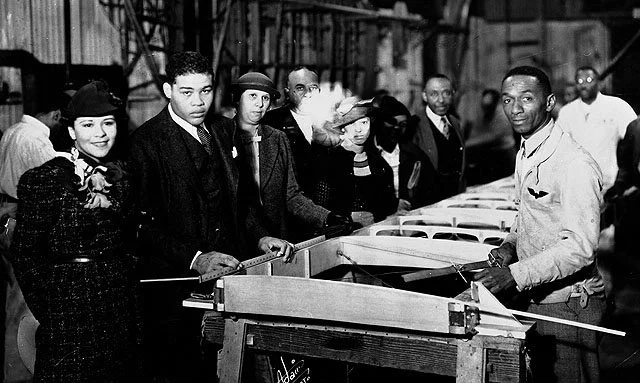William J. Powell: The Pilot Who Dreamed in Black and White
William J. Powell in his U.S. Army uniform. (Public Domain photo)
In an era when Jim Crow ruled the ground, William J. Powell looked to the sky.
In the 1920s and 30s, flight, for Black Americans, wasn’t just out of reach—it was unimaginable. Expected to stay earthbound, Blacks were excluded from cockpits, mechanics' shops, airfields, and every rung of the aviation ladder.
Born in Kentucky in 1897 and raised in Chicago, William J. Powell served as a lieutenant in the segregated U.S. Army during World War I. Upon returning, he channeled his wartime experience into a new mission: conquering aviation’s racial barriers. He earned an engineering degree at the University of Illinois and became one of the first African Americans to earn a pilot’s license on the West Coast.
William J. Powell didn’t just want to fly—he wanted to dismantle the system that kept Black Americans grounded.
Building Wings for a Community
In 1929, he founded the Bessie Coleman Aero Club in Los Angeles, training Black pilots and staging public airshows that doubled as acts of defiance. The club wasn't just a training ground—it was a sanctuary for visionaries. Students came from across the country to learn under Powell, drawn by the promise of flight and the power of community.
William J. Powell (far right), organized the Bessie Coleman Aero Club to promote aviation awareness in the black community.
His 1931 all-Black airshow drew 15,000 spectators—proof that excellence could not be hidden. These events weren’t just entertainment; they were blueprints for a future where Black aviators would lead.
Though based in California, Powell’s influence seeped into the South through Black newspapers and word of mouth, reaching places like Louisiana’s Delta, where opportunities were scarce but determination ran deep.
Aviation as Liberation
In 1934, Powell published Black Wings, a manifesto wrapped in memoir. “The sky is not the limit—it is the beginning,” he wrote. The book became a rallying cry, its ideas carried by Black newspapers, churches, and civic groups. Powell believed aviation could transform not just individuals, but an entire race. “When we fly,” he said, “we rise above more than the earth—we rise above limitation.”
Joe Louis visits with William Powell in 1938.
When Powell died in 1942—months after Pearl Harbor—he left behind more than a club or a book. He left a foundation.
The Tuskegee Airmen’s combat triumphs over Europe were made possible by the pipeline Powell helped build: his graduates became instructors; his airshows inspired recruits; his writing gave them intellectual armor. As one historian noted, “He spent the 1930s proving Black men belonged in the skies—not as novelties, but as commanders.”
Why Powell’s Story Matters in Northeast Louisiana
Today, Black pilots still make up less than 3% of commercial aviators—a reminder that Powell’s fight continues. In Monroe, the Chennault Aviation & Military Museum preserves wartime history, and while stories like Powell’s may not be central to its mission, visiting with his legacy in mind can potentially transform the experience. When we focus broadly on aviation and military service, Powell’s story reminds us that Black contributions were vital to that legacy.
At the Northeast Louisiana Delta African-American Heritage Museum we encourage you to explore these connections and to speak Powell’s name aloud. His life challenges us to look critically at whose stories are elevated—and whose are still waiting to be told.




